IEDs: the invisible enemy
 Alex Thomson
Chief Correspondent
Alex Thomson
Chief Correspondent
How does it feel to walk alone towards an unexploded bomb? Channel 4 News is given unique access to one of Britain’s IED units in Afghanistan and reveals a terrifying view of the loneliest job.
In the war of the IED – Improvised Explosive Device – it is the loneliest of lonely walks. The last 30 yards out from your colleagues, dropping off your cover man 20 yards out from the bomb, writes Alex Thomson.
On your own, you have the last few yards to yourself. You are going into the death zone. A place where if you make a mistake, no flack jacket or helmet will make the slightest difference.
This is no world for mavericks or heroes: just close-knit, tight teamwork. Alex Thomson
Forget, please, the absurd nonsense served up to us in The Hurt Locker. This is no world for mavericks or heroes: just close-knit, tight teamwork.
It starts with an urgent notification that an IED has been found. They call them ten-liners, emails of ten lines detailing everything known about the device.
But teams like that led by “Woody”, Staff Sergeant Gareth Wood of the Royal Logistic Core sometimes get more than ten such warnings in one day. At the bomb site, best forget everything you have seen about police cordons, crowd safety and other quaint British notions.
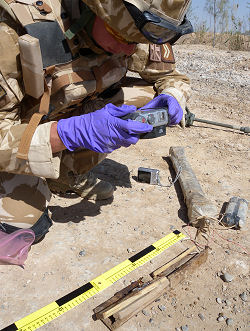
What is an IED?
IED stands for "improvised explosive device", often referred to as a roadside bomb.
An IED is a homemade bomb, often put together from household items, bits of metal, wood, plastic and tape.
An IED requires a detonator and a trigger for an electric charge to set off the bomb. This can be in the form of strips of metal which make contact when a vehicle passes over.
Triggering methods can also include mobile phones, a garage door opener, or a child's radio-controlled toy or a rubber hose which blows air on a switch.
A typical IED terror cell includes around six people: a financier,
Bomb-maker, emplacer, triggerman, spotter, and often a cameraman - videos of explosions
are often posted online for propaganda purposes.
US forces have deployed electronic jamming systems in an attempt to block the signals of radio-controlled devices.
The reality for UK forces often means hours spent carefully marking out bomb sites with paint before hauling them out with cables and hooks.
(Source: MoD, usembassy.gov)
Clearly the Afghan locals all seem to know where the bombs are laid. They’ll drive round columns of heavily armed military vehicles because they want to be on their way and to hell with Nato.
Instead of defusing the bomb, soldiers usually have to yell at people to go back from the bomb zone. Traffic must be halted. Warning flares fired if necessary. It all sort of works, eventually.
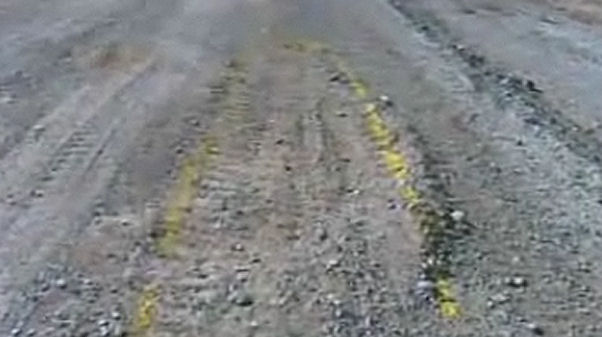
Walking towards an unexploded bomb – the yellow chalk marks the ‘death zone’.
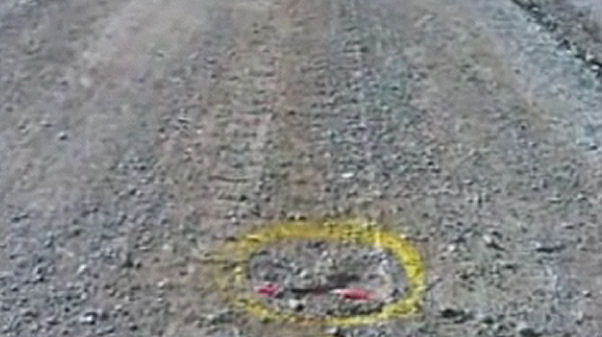
Into the ‘death zone’ where an error could trigger the explosive at any moment.

The bomb disposal expert brushes dust from the IED site with a household paint brush.
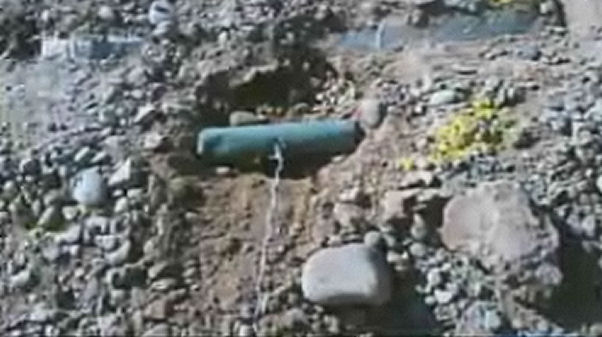
IED uncovered: seconds later it is defused by UK troops.
In the heat, tension and general sense of chaos the British team must also be mindful of an ambush.
Nothing is more exposed and static than soldiers painstakingly feeling their way to a buried bomb, warily waving their mine detectors.
Nothing is more exposed and static than soldiers painstakingly feeling their way to a buried bomb. Alex Thomson
About the only thing the British have going for them, the Pashto word for mine, is mine.
Now for obvious reasons I’m not going to tell you, indeed I’m not allowed to tell you, what really goes on in the death zone. But the bombs are not the sophisticated devices used in Iraq or Northern Ireland.
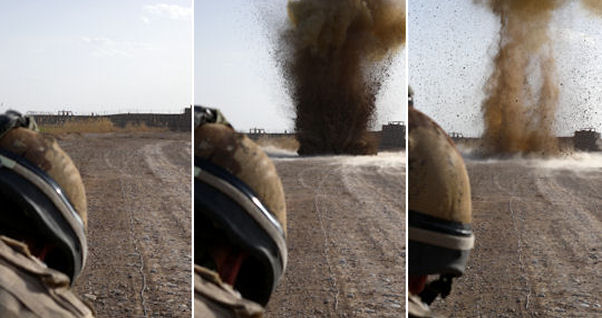
So it is a matter of breaking the link between the pack of batteries wired into the detonator and the container of ammonium nitrate and sugar, or ammonium nitrate and aluminium depending on your recipe.
Variations abound, the team we filmed discovered both home-made explosive mixtures: pressure plate triggers, release pressure triggers, small devices and much larger ones of 40kg or more explosive.
Some of the defusing methods are almost quaintly old-fashioned. No robots on the team we filmed, still less the Oscar-laden moon suits of The Hurt Locker. No no, this thing the British army think more along the lines of cables, hooks and elbow grease to haul bombs out of the road to a safe distance.
“It’s surreal really, you’re just in you’re own world. It’s my office I suppose” said Staff Sergeant Wood. “It’s just what we do.”
The British army think more along the lines of cables, hooks and elbow grease to haul bombs out of the road to a safe distance.
Though that extraordinary work ethic was seriously tested as we filmed bomb after bomb detected then defused. There were so many, our convoy drove past several before they were even discovered. But nobody dwells on lucky escapes.
After nine hours in the blazing heat with no break, yet another notification, a ten-liner: “Oh not another ******* bomb” as one of the team put it.
In the end running low on batteries, fuel, endurance, food, stamina, you name it – the IED team had no choice. All forensics, examination and bagging up of bomb parts, was forgotten in the race against the clock.
Even so the clock won. Edging towards exhaustion two more bombs on the way back to their camp, had to be left and marked for the next day.
All this on one section of road a few hundred yards long in one small part of one small district of Helmand province.
Unprecedented and unpredictable
Even with 20 or more years experience there is no crystal ball to know what is lurking around the corner.
The searchers need to be one step ahead at all times in a game where there are no winners, only those who survive, writes Captain John Evett.
Operations in Afghanistan have developed significantly since 2001, particularly since the British Army's deployment to Helmand province in 2006.
Read more
The army robots fighting the Taliban, by Carl Dinnen
For British soldiers serving in Afghanistan, expensive hi-tech weapons are not the problem. It is the enemy's cheap improvised explosive devices - or IEDs - that are costing British lives.
It has become an unprecedented threat. Makeshift bombs, made up from bits of metal and wood wrapped in plastic.
The IED has become the deadliest of enemies to British troops in Afghanistan. Last summer British forces were dealing with a thousand incidents a month.
Captain Liam FitzGerald-Finch, of 11 EOD Regiment, described a typical device.
He told Channel 4 News: "Fundamentally it's made very simply of household items - there's an old hacksaw blade at the top and some random bits of metal nailed onto the wood below.
"The idea being that pressure's applied - footfall or a vehicle, and the connection is made."
Neither in Northern Ireland nor in Iraq was this type of homemade bomb scattered so indiscriminately as during the Afghanistan conflict.
Each "incident" could involve anything from one to a dozen devices, often linked together to catch out the bomb disposal men.
Warrant Officer Colin Grant demonstrated how he and his team send in a new lightweight "robot" vehicle, a Dragon Runner, to check a suspicious device. On his last tour to Afghanistan he dealt with around 60 IEDs.
Ministry of Defence 'robots'
After the robot has investigated, Colin is the man who takes "the long walk".
With a degree of coolness he tells me his mind is just busy and focused on the job as he walks towards a live bomb.
11 Explosive Ordnance Disposal Regiment is the army's elite bomb disposal unit. It is made up of the only people trained to deal with high-threat IEDs - the ones rigged to catch out anyone trying to defuse them.
Only a few are chosen to join this group and even then the course for dealing with high-threat IEDs has a 50 per cent failure rate.
All of this means the army cannot increase the number of "operators" in theatre as easily as the Taliban can increase the numbers of IEDs they are planting around Afghanistan.